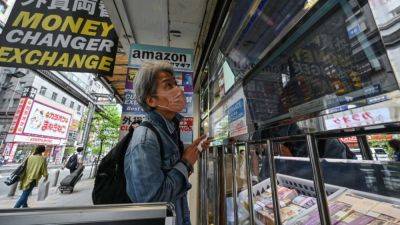As stock sell-off sweeps Asia, China’s yuan surges as US rate cuts loom
Anticipation of US interest rate cuts in September drove China’s yuan to a seven-month high against the US dollar on Monday, and also boosted the Japanese yen, with some analysts expecting the outlook for the Chinese currency would still largely depend on the strength of the US dollar.
On Monday, the onshore yuan rallied to a high of 7.1150 per US dollar during morning trading, and closed the domestic session at 7.1385, the strongest level since January 2.
The yen also surged by as much as 3.4 per cent against the US dollar, which has been under pressure following the release of weak American job data on Friday.
Japan’s benchmark Nikkei 225 index closed with its largest single-day point drop in history on Monday after falling by 12.4 per cent, while the broader Tokyo Stock Price Index, commonly known as Topix, fell by 12.23 per cent. The figures marked the lowest closes for both indices since October.
Forecasts on US interest rate cuts had gone from 25 basis points to almost 50 basis points in September over a souring outlook on the world’s largest economy, analysts said.
“The weaker US dollar on the back of US recession fears, which has seen the market pricing in aggressive rate cuts for the rest of this year, has been the key driver behind the yuan’s surge,” said Khoon Goh, head of Asia research for ANZ.
“Now that the spot [price] has converged towards the fixing, we could see some stabilisation in the currency, although this is dependent on the near-term trajectory of the US dollar.”
On Monday, the People’s Bank of China set the yuan’s fixing stronger than expected at 7.1345 per dollar.
The fixing limits the onshore yuan’s moves by 2 per cent on either side and is often used by the market to gauge the official stance towards




